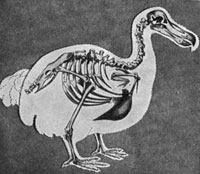
i won’t judge monocle on a design basis or as an editorial project; this has been
brought up elsewhere. i'm only concerned with monocle’s pretenses at having a say in what cities should be, do and aspire to. who does mr. brulé think he is, playing urban consigliere?
most likely, it comes natural to him, considering he sees urban problems and opportunities being a question of image, cities as subjects of prospective makeovers. a teacher of mine once said that to know the work, the first thing you need is at least some faint notion of the person behind it. according to the wikipedia
entry that he himself must have written or commissioned, brulé is the product of a superstar football playing father and an artist mother, your typical class of 1960-something yearbook dream couple: pretty, ambitious and a perfect fit for stereotypical molds. mr. brulé came to being in canada, which explains his fixation on worldliness (canadiannes has to be one of the blandest identities out their, together with austrailiannes). his hardy middle-class background would also account for his intensely aspirational, straight-to-the-neck competitiveness. add the fact that he’s gay and relatively goodlooking, and you have monocle. brulé and his products–like big-sister wallpaper*–have that nineties whiff of bland, numbing conspicuity and unrestraint. monocle reads like a douglas coupland case study, without the absurdity of it being intended.
likewise, the monocle strand of urban understanding is stuck in the past, stale and out of tone with reality. at this point, we should be over the idea of urbanism as product placement. in this sense, monocle is hyperconservative; brulé is a believer, a faithful of the status quo. just when you thought you had it bad with richard florida, there comes monocle with its top 25 list and its recipes for livability. (by the way, they actually interview richard florida).
the issue’s opening statement reads:
governments around the world are realizing that it’s no longer enough to be just a financial center, you also need to be a design capital, an ecological champion, a hub for knowledge and a magnet for creatives.translating this from monclespeak, this means thriving on high-end retail, greenwashing, and an uncritically informed media-saavy culture industry out of adorno’s worst nightmare.
cities were put to the test in areas like criminality rates (murders and domestic break-ins), education, medical care, sunshine, tolerance (for some reason limited to acceptance of gay people), environment (bike routes and parks), with an added recommendation, or “moncle quick-fix” on specific issues: more shopping hours (zürich), more reasonably-priced lattés (helsinki), avoiding vespa-sized potholes on the roads (montréal), and countering bans on sunday alcohol-sales (minneapolis). with this type of detail how can one blame monocle for being superficial? it's obvious they’ve done their homework; the problem is the superficiality is embedded in their worldview.
it pervades the retro illustrations reminiscent of victor gruen urbanism that dot the issue. it runs through the soft porn-quality portraits and the foodporn and productporn and all sorts of porn and fetish that make up the graphic contents. it oozes from the crisp types and the subdued diagrams that dress this everlasting lovesong to global consumerism. monocle guards, flaunts, and counts on people feeling bad because they’re missing out as a way to praise–and hopefully sustain–a model with all its flaws and distortions.
monocle thrives on the clouding of success. according to the magazine, europe is this wonderful place where life is basically high-quality. nothing is mentioned about soaring unemployement, crippling salaries, inflation, the lethargic labor market, xenophobia, growing inequality, a much-battered aging population, etc. after a couple of years here I can confidently affirm that living in europe is no candy. true, you can be miserable in lovely parks, in the clean and functional metro, on your rental bike, watching government invest in publicity, reassuring you of how happy you should be to be here, because you won’t be mugged or have to deal with ugliness. not on the surface, at least.
the issue also saves a spot for “winning losers” (the city equivalent of sarah jessica parker’s louis vuitton rental bag carrying, diversity quota-filling assistant in the sex and the city movie): beirut, buenos aires, istanbul, etc. but again, more than presenting an alternative to the dominant, money-driven urban success stories of the top 25, these cities are portrayed as swanky but not-quite-there-or-quite-like-us-yet.
you do have to give the monocle team some credit for their efforts, specially comparing this cities issue to last year’s. possibly the most interesting section is the “global expert” brief interviews part. you can skip richard florida and ricky burdett (saying the same old thing they would anywhere else) and read some decent bits of thought from
alain de botton on bad british planning, or jonathan raban on the gradual evanescence of diversity in cities. some of these people actually contradict the overall thread of reasoning behind monocle’s urban viewpoint. one of my favorites is–
again–pedro reyes, replying bluntly to a question on livability: quality of life equals boredom.
it is difficult to imagine monocle ever proposing something that will challenge our understanding of cities and our daily lives. they’ll never change because their origin is fundamentally rotten. (profit-driven). cities are sustained on purpose and struggles for meaning and/or survival. comfort and prettiness aren’t enough of a purpose to endure the violent onslaught of everydayness.
























